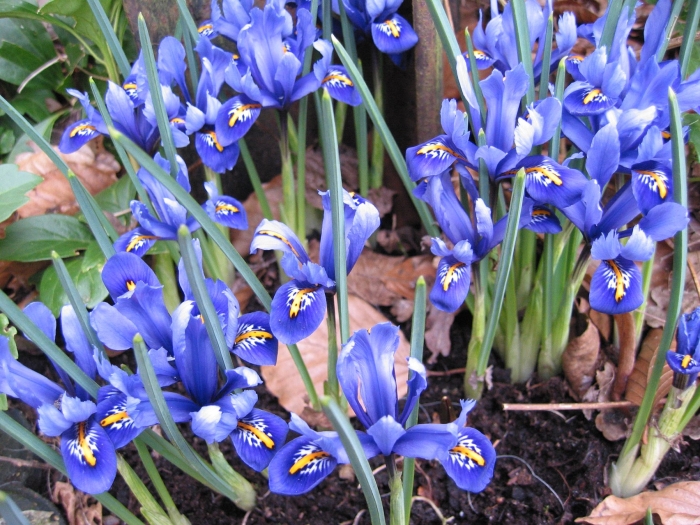Netted Iris
(Iris reticulata)
Netted Iris (Iris reticulata)
/
/

Rasbak
CC BY-SA 3.0
Image By:
Rasbak
Recorded By:
Copyright:
CC BY-SA 3.0
Copyright Notice:
Photo by: Rasbak | License Type: CC BY-SA 3.0 | License URL: http://creativecommons.org/licenses/by-sa/3.0/ | Uploader: Rasbak | Publisher: Wikimedia Commons | Title: Iris_reticulata.jpg | Notes: |




























Estimated Native Range
Summary
Iris reticulata, commonly known as netted iris or golden netted iris, is a perennial herbaceous bulb of the Iridaceae family. It is native to rocky hillsides and scrubland from eastern Turkey to Iran, where it thrives in well-drained soils and is adapted to dry summer conditions. The plant typically grows to 15 centimeters (5.9 inches) in height, featuring narrow, tubular leaves with a distinctive ribbed texture. The flowers, which emerge in early spring, are particularly striking, with petals ranging from yellow to blue or purple, each with an eye-catching orange blaze on the falls. The blooms are highly showy and add early-season color to gardens.
The netted iris is valued for its early spring blooms and its ability to naturalize in suitable conditions. It is often used in rock gardens, gravel gardens, and borders, where its small size and vibrant flowers can be showcased. While hardy, Iris reticulata prefers a sunny position and well-drained soil that dries out in summer, mimicking its native habitat. It is generally low-maintenance, but it can be susceptible to bulb rot if kept too wet. To avoid this, gardeners should ensure good drainage and avoid overwatering. After flowering, the foliage should be allowed to die back naturally to provide energy for the next season’s blooms.CC BY-SA 4.0
The netted iris is valued for its early spring blooms and its ability to naturalize in suitable conditions. It is often used in rock gardens, gravel gardens, and borders, where its small size and vibrant flowers can be showcased. While hardy, Iris reticulata prefers a sunny position and well-drained soil that dries out in summer, mimicking its native habitat. It is generally low-maintenance, but it can be susceptible to bulb rot if kept too wet. To avoid this, gardeners should ensure good drainage and avoid overwatering. After flowering, the foliage should be allowed to die back naturally to provide energy for the next season’s blooms.CC BY-SA 4.0
Plant Description
- Plant Type: Bulb
- Height: 0.3-0.5 feet
- Width: 0.18-0.3 feet
- Growth Rate: Moderate
- Flower Color: Blue, Purple
- Flowering Season: Spring
- Leaf Retention: Deciduous
Growth Requirements
- Sun: Full Sun, Part Shade
- Water: Medium
- Drainage: Medium
Common Uses
Bee Garden, Bird Garden, Border Plant, Butterfly Garden, Deer Resistant, Drought Tolerant, Fragrant, Hummingbird Garden, Low Maintenance, Potted Plant, Rabbit Resistant, Rock Garden, Salt Tolerant, Showy Flowers, Street Planting
Natural Habitat
Rocky hillsides and scrubland
Other Names
Common Names: Netted Iris, Golden Netted Iris, Reticulated Iris, Winter Iris, Kleine Netzblatt-Iris, Våriris, Íris
Scientific Names: , Iris reticulata, Iridodictyum reticulatum, Iridodictyum kurdicum subsp. ans, Neubeckia reticulata, Xiphion reticulatum,
GBIF Accepted Name: Iris reticulata M.Bieb.